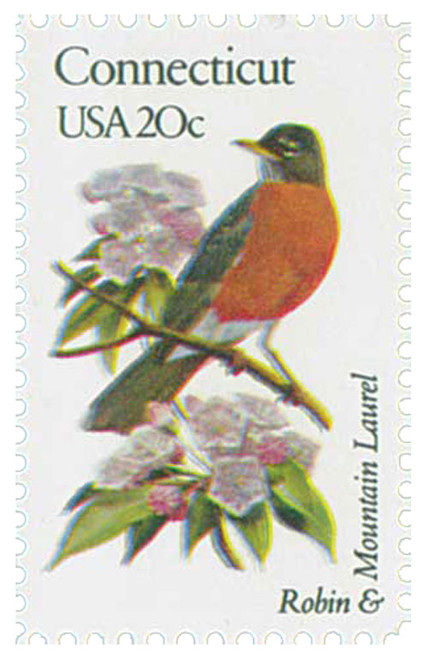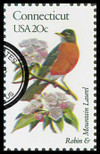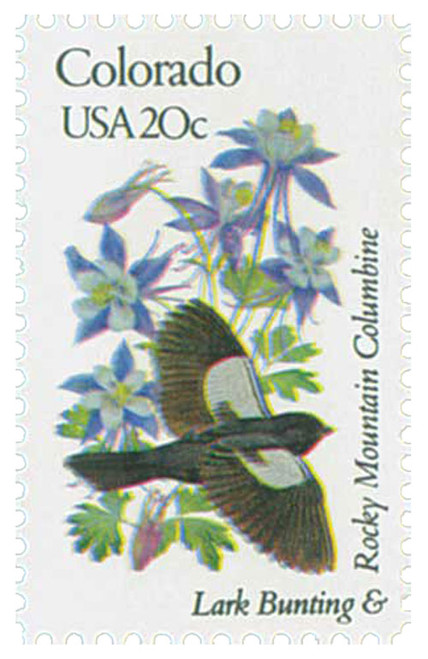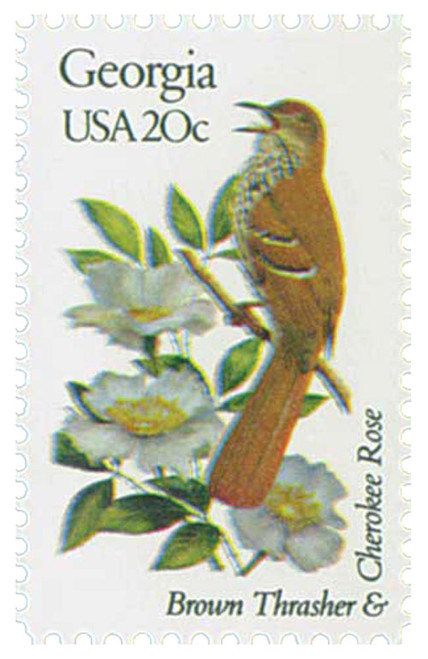
# 1959 - 1982 20c State Birds and Flowers: Connecticut
20¢ Connecticut
State Birds and Flowers
City: Washington, DC and state capitals
Quantity: 13,339,000 panes
Printed By: Bureau of Engraving and Printing
Printing Method: Photogravure
Perforations: 10.5 x 11.25
Color: Multicolored
Connecticut Becomes 5th State
On January 9, 1788, Connecticut ratified the U.S. Constitution, making it the fifth state to join the young United States.
English colonists from Massachusetts founded Connecticut’s first permanent European settlement, Windsor, in 1633. Most of these settlers left Massachusetts seeking political and religious freedom. Other settlements quickly followed, including Hartford, New London, Saybrook, and Wethersfield. In 1636, Hartford, Wethersfield, and Windsor united to form the Connecticut Colony, also known as the River Colony.
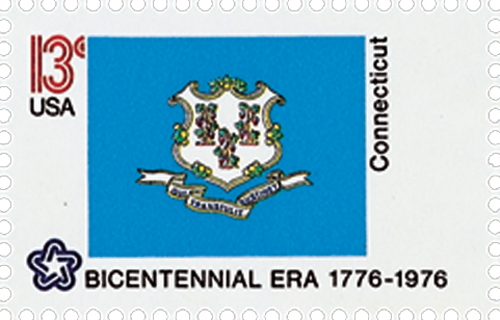
As the number of Connecticut colonists grew, the native Pequot Indian tribe grew hostile, fearing that settlers would challenge their control of the region. After several Indian attacks, Captain John Mason led a small army aided by Mohegan and Narragansett warriors against the Pequot in 1637. Mason quickly defeated the Pequot.
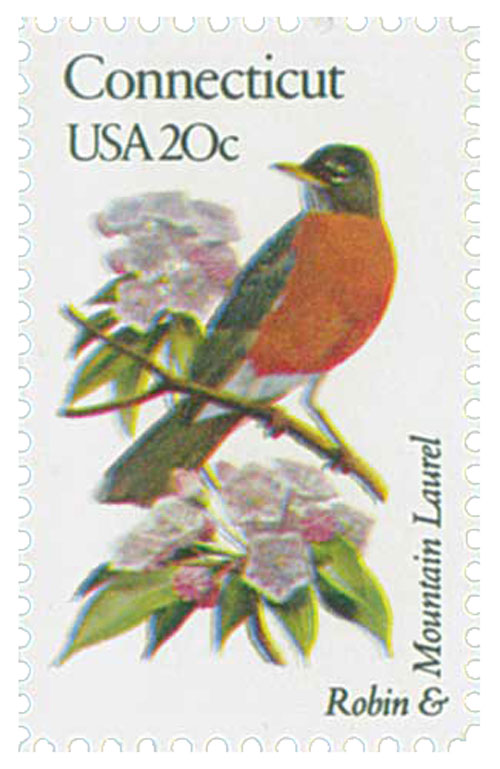
The colony of New Haven was founded as a Puritan theocracy, or church-ruled state, in 1638. Five years later, Branford, Guillford, Milford, Stamford, and Southhold (located on Long Island) joined the New Haven colony. By 1660, many towns had joined the Connecticut Colony, including Fairfield, Farmington, Middletown, New London, Norwalk, Saybrook, and Stratford. In 1662, John Winthrop, Jr., of the Connecticut Colony, was granted a charter from the King of England. This charter gave the colony control of a 73-mile-wide strip of land running from Narragansett Bay to the Pacific Ocean (at that time, the distance to the Pacific was unknown). This area included the New Haven Colony. Despite objections from the New Haven colonists, the two were united in 1665.
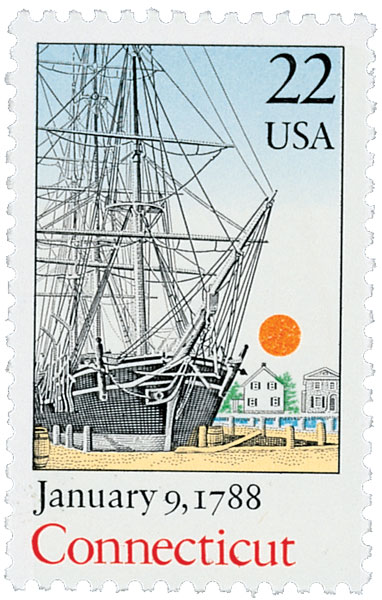
A century later, as America waged war on England, the majority of Connecticut colonists favored independence. And on June 14, 1776, a resolution was passed backing this action. On July 4, 1776, Connecticut adopted the Declaration of Independence. Two years later, Connecticut approved the Articles of Confederation – the forerunner of the United States Constitution.
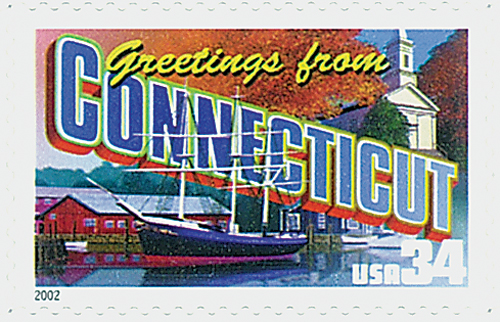
When the fighting broke out in Massachusetts in 1775, hundreds of Connecticut men joined the patriot forces. Connecticut’s governor, Jonathan Trumbull, was the only colonial governor to hold office throughout the revolution, because he sided with the patriots. Trumbull was a close friend and trusted adviser to George Washington, who called him Brother Jonathan. Nathan Hale was also a leading patriot from Connecticut. Hanged by the British for being a spy, Hale’s dying words, “I only regret that I have but one life to lose for my country,” have made him a legend.
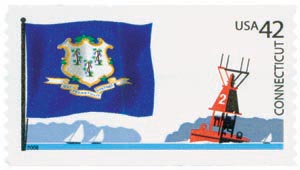
At the Constitutional Convention of 1787, Connecticut’s delegates played an important role in bringing about the Great Compromise, sometimes called the Connecticut Compromise. Delegates from large states wanted congressional representation to be based on population, while smaller states wanted representation to be equal. The Connecticut Compromise provided for representation based on population in the House and equal representation in the Senate. This compromise allowed both large and small states to fully support a central government and earned Connecticut the nickname, “The Constitution State.” Connecticut ratified the United States Constitution on January 9, 1788, making it the fifth state to join the Union.
20¢ Connecticut
State Birds and Flowers
City: Washington, DC and state capitals
Quantity: 13,339,000 panes
Printed By: Bureau of Engraving and Printing
Printing Method: Photogravure
Perforations: 10.5 x 11.25
Color: Multicolored
Connecticut Becomes 5th State
On January 9, 1788, Connecticut ratified the U.S. Constitution, making it the fifth state to join the young United States.
English colonists from Massachusetts founded Connecticut’s first permanent European settlement, Windsor, in 1633. Most of these settlers left Massachusetts seeking political and religious freedom. Other settlements quickly followed, including Hartford, New London, Saybrook, and Wethersfield. In 1636, Hartford, Wethersfield, and Windsor united to form the Connecticut Colony, also known as the River Colony.

As the number of Connecticut colonists grew, the native Pequot Indian tribe grew hostile, fearing that settlers would challenge their control of the region. After several Indian attacks, Captain John Mason led a small army aided by Mohegan and Narragansett warriors against the Pequot in 1637. Mason quickly defeated the Pequot.

The colony of New Haven was founded as a Puritan theocracy, or church-ruled state, in 1638. Five years later, Branford, Guillford, Milford, Stamford, and Southhold (located on Long Island) joined the New Haven colony. By 1660, many towns had joined the Connecticut Colony, including Fairfield, Farmington, Middletown, New London, Norwalk, Saybrook, and Stratford. In 1662, John Winthrop, Jr., of the Connecticut Colony, was granted a charter from the King of England. This charter gave the colony control of a 73-mile-wide strip of land running from Narragansett Bay to the Pacific Ocean (at that time, the distance to the Pacific was unknown). This area included the New Haven Colony. Despite objections from the New Haven colonists, the two were united in 1665.

A century later, as America waged war on England, the majority of Connecticut colonists favored independence. And on June 14, 1776, a resolution was passed backing this action. On July 4, 1776, Connecticut adopted the Declaration of Independence. Two years later, Connecticut approved the Articles of Confederation – the forerunner of the United States Constitution.

When the fighting broke out in Massachusetts in 1775, hundreds of Connecticut men joined the patriot forces. Connecticut’s governor, Jonathan Trumbull, was the only colonial governor to hold office throughout the revolution, because he sided with the patriots. Trumbull was a close friend and trusted adviser to George Washington, who called him Brother Jonathan. Nathan Hale was also a leading patriot from Connecticut. Hanged by the British for being a spy, Hale’s dying words, “I only regret that I have but one life to lose for my country,” have made him a legend.

At the Constitutional Convention of 1787, Connecticut’s delegates played an important role in bringing about the Great Compromise, sometimes called the Connecticut Compromise. Delegates from large states wanted congressional representation to be based on population, while smaller states wanted representation to be equal. The Connecticut Compromise provided for representation based on population in the House and equal representation in the Senate. This compromise allowed both large and small states to fully support a central government and earned Connecticut the nickname, “The Constitution State.” Connecticut ratified the United States Constitution on January 9, 1788, making it the fifth state to join the Union.

